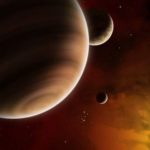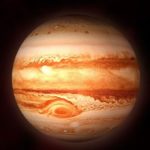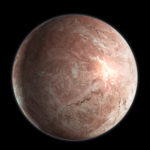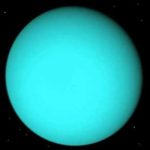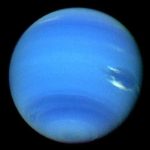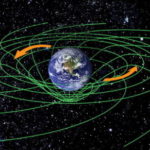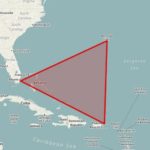7 of the strangest planets in the universe
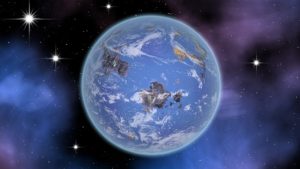 Mankind has already discovered many strange planets in the Universe. No wonder – we still know so little about the vast space surrounding us that everything new can really seem strange and unusual to us. Given the diversity of exoplanets that astronomers and astrophysicists already know about four thousand, we can expect the most extraordinary discoveries.
Mankind has already discovered many strange planets in the Universe. No wonder – we still know so little about the vast space surrounding us that everything new can really seem strange and unusual to us. Given the diversity of exoplanets that astronomers and astrophysicists already know about four thousand, we can expect the most extraordinary discoveries.
The darkest planet
The darkest exoplanet is the hot gas giant TrES-2b, comparable in size to Jupiter. Measurements showed that TrES-2b reflects less than 1% of the light, making it blacker than coal. At the moment, TrES-2b is the blackest exoplanet known to mankind.
A hot planet consumed by a star
WASP-12 b is a large planet, 74% larger than Jupiter, it is located at a distance of 870 light years from us. Its main feature is that it is so close to its star that it makes a revolution in just 1 day, which makes it possible to exchange material between them. Simply put, the luminary slowly absorbs the exoplanet, and completely destroys it in about 10 million years.
The hottest planet
KELT-9b is the hottest exoplanet ever discovered. It is so hot that it literally destroys itself, burning its mass. This celestial body is located 650 light years from us, and the exoplanet is constantly turned on one side to its star. KELT-9b is three times larger than Jupiter, and the temperature on its surface reaches 4315 C °. This is more than some stars! For comparison, the surface temperature of our Sun is about 5500 C °.
Planet of the three suns
Only a truly strange and unusual planet can boast of three suns at once. For example, HD 188753 A b, located in the triple star system. Moreover, it rotates around its luminary at a very small distance, so that a year on HD 188753 A b lasts only 80 hours. And the distance between the three stars of the system is incredibly small by cosmic standards, and is approximately equal to the distance between the Earth and Saturn.
Ocean planet
Planet GJ 1214 b revolving around a red dwarf 40 light years from us is 6.5 times heavier and 2.5 times larger than Earth, and it consists of water, according to some estimates, 75%. Most astrophysicists believe that GJ 1214 b is an ocean planet, and the depth of this ocean can exceed 1100 km. That is, it is about 100 times deeper than the deepest point on Earth – the Challenger Abyss in the Mariana Trench.
A planet where it rains from stones
The unusual planet Corot 7B is located very close to its star. So close that it is always turned to it on one side, and the year here lasts about 20 hours. On the constantly lit side there is an ocean of lava with temperatures up to 2500 ° C, and the atmosphere is composed mainly of evaporated minerals. But on the night side, the Corot 7B is not so hot, so chilled minerals fall on it in the form of stone rain.
Planet that was a star
PSR J1719-1438 b – the planet is not just strange, but unique! It represents the remainder (about 0.1% of the initial mass) of the white dwarf, which used to be part of a binary star system. The second star in the system is the pulsar, which literally swallowed up all the matter of the white dwarf, and it eventually turned into a carbon planet. PSR J1719-1438 b is 5 times larger than Earth, but it is superior to Jupiter in mass! Moreover, this exoplanet consists of carbon, compressed under monstrous pressure, that is, it is almost a pure diamond.
